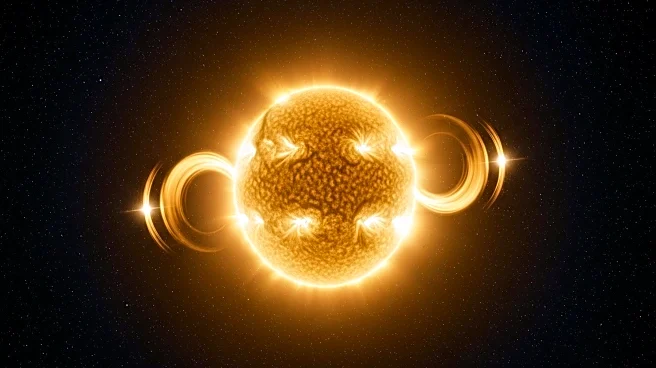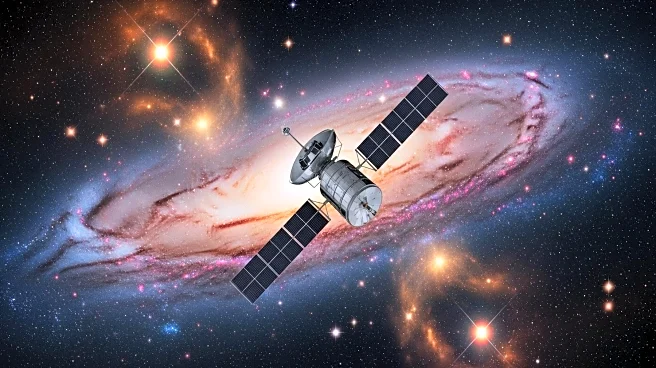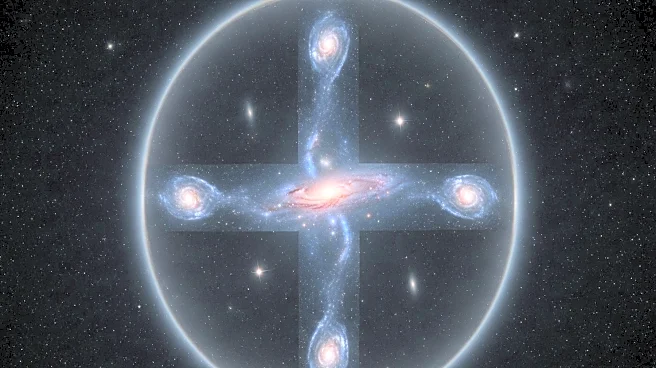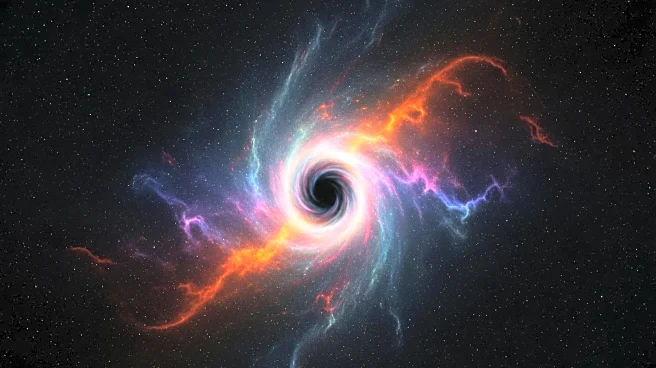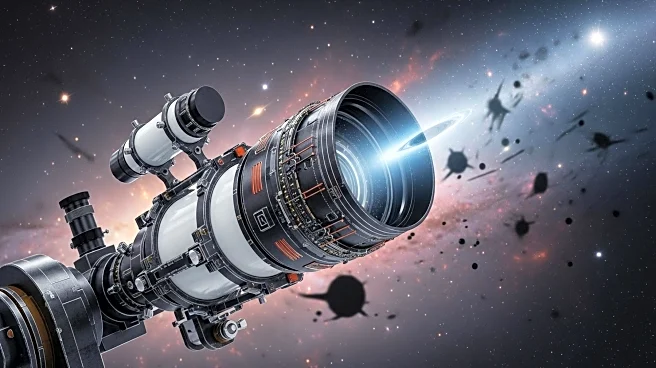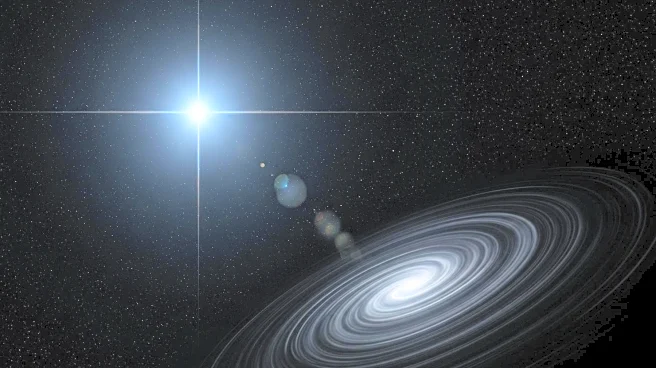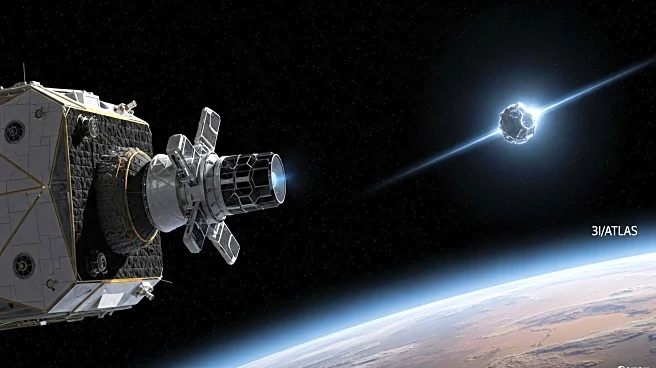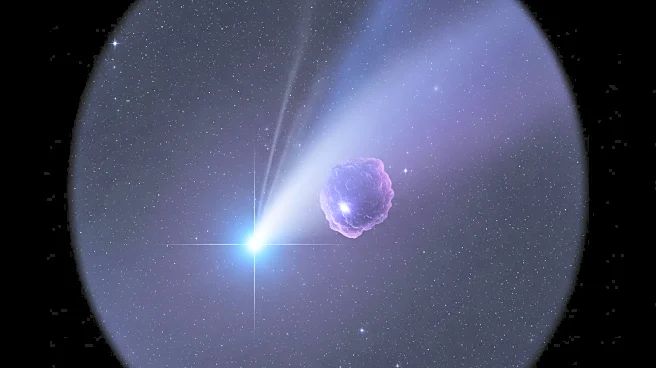What's Happening?
The Event Horizon Telescope (EHT) has released new images of the supermassive black hole M87*, located 55 million light-years from Earth. These images show a reversal in the polarization of the magnetic fields around the black hole over four years, indicating a dynamic and complex environment. The EHT first captured M87* in 2019, marking it as the first black hole ever imaged. The recent observations reveal a jet of matter emerging from the black hole, with its base connected to the bright ring around the event horizon. This discovery challenges existing models and suggests that the magnetized plasma near the event horizon is far from static.
Why It's Important?
The findings from the EHT provide critical insights into the behavior of matter in extreme environments, such as those around supermassive black holes. Understanding these dynamics is essential for developing theories about how black holes influence their surrounding galaxies by injecting energy into them. The changes in the polarization pattern of M87*'s magnetic fields push the limits of current theoretical models, highlighting the need for further research. This study also demonstrates the evolving capabilities of the EHT as a scientific observatory, which continues to enhance our understanding of black hole physics.
What's Next?
Future observations from the EHT are expected to improve with upgrades to its network, including the Greenland Telescope and the James Clerk Maxwell Telescope. These enhancements will allow for sharper images and more detailed studies of black holes, contributing to a deeper understanding of their role in cosmic evolution. The EHT team plans to continue exploring the dynamics of plasma and magnetic fields around black holes, which will likely lead to new scientific discoveries and questions.

